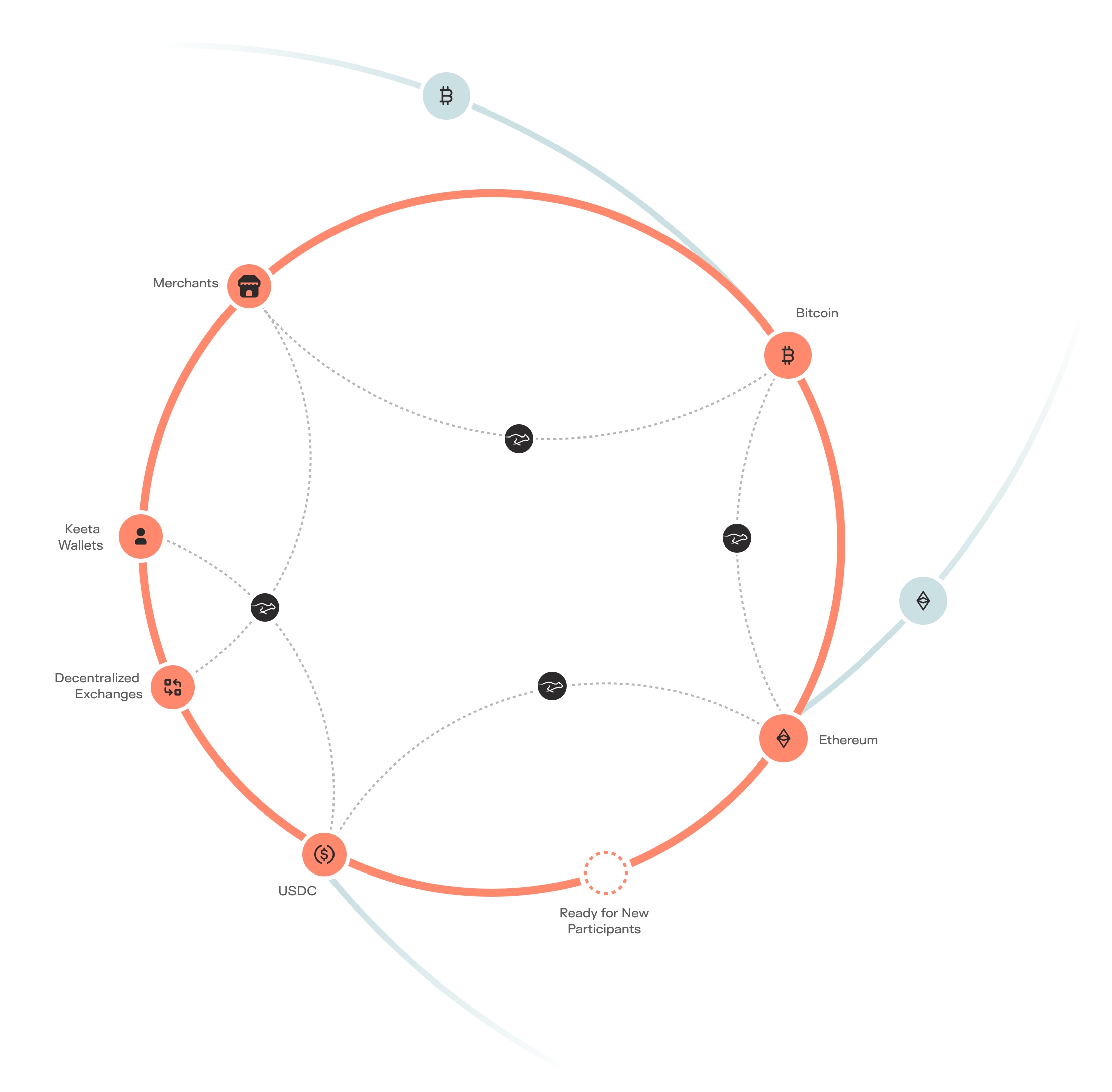Introduction
Keeta Network is a high-performance layer-1 blockchain network designed to serve as a common-ground for all asset transfers. Cross-chain transactions can be completed seamless, providing a direct transfer between any assets from any network, instantly. Systems can easily connect to Keeta Network, allowing their assets to interact with the rest of the assets in Keeta's ecosystem.
In addition to interoperability, Keeta has also introduced unprecedented performance and utility. Settlement times of 400 milliseconds and a throughput of up to 10 million transactions per second place Keeta as the front-runner in efficiency. This performance and innovation, in addition to Keeta's native tokenization and built-in compliance protocols, makes Keeta Network the ideal centerpiece for the digital asset ecosystem.

Last updated


